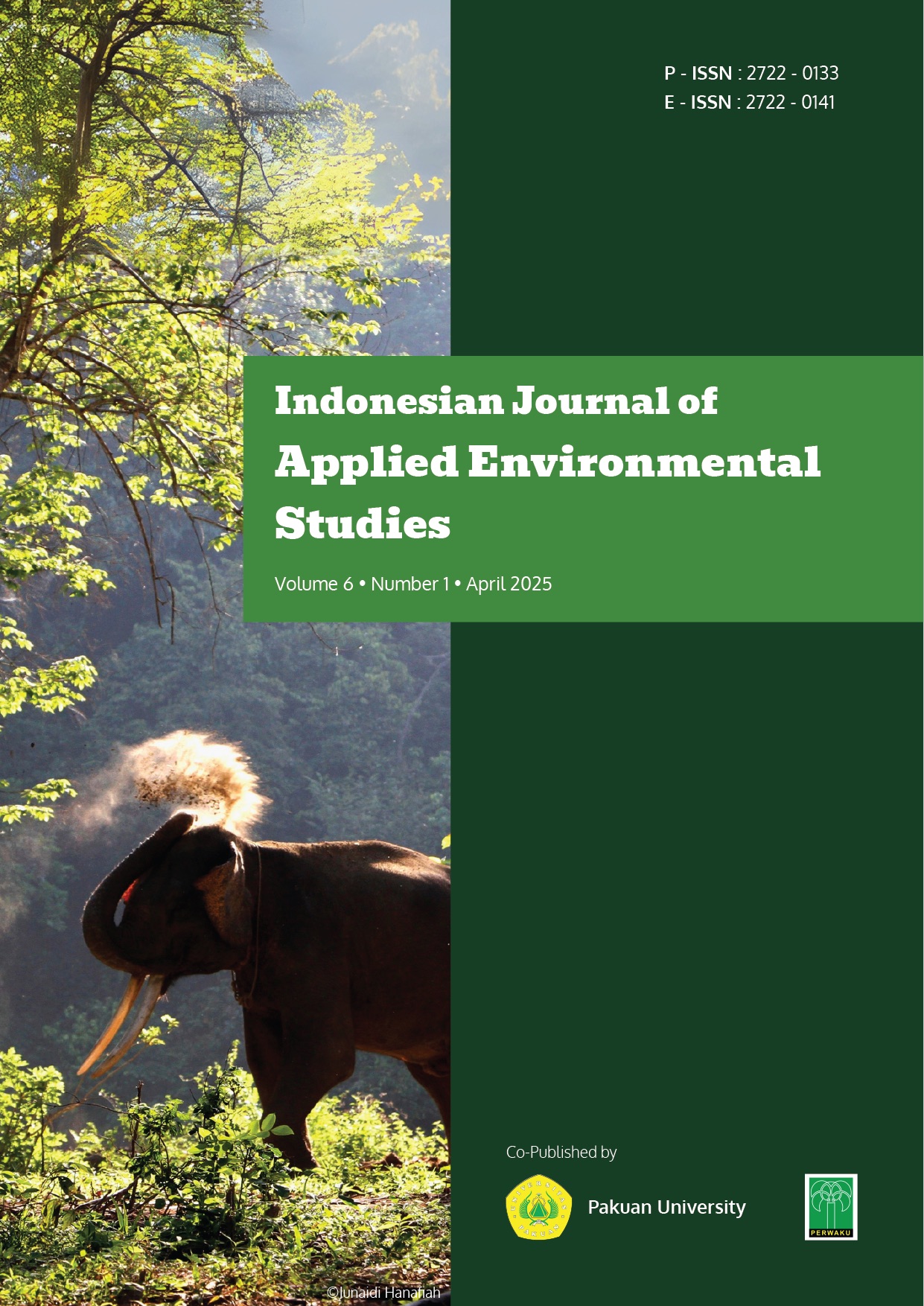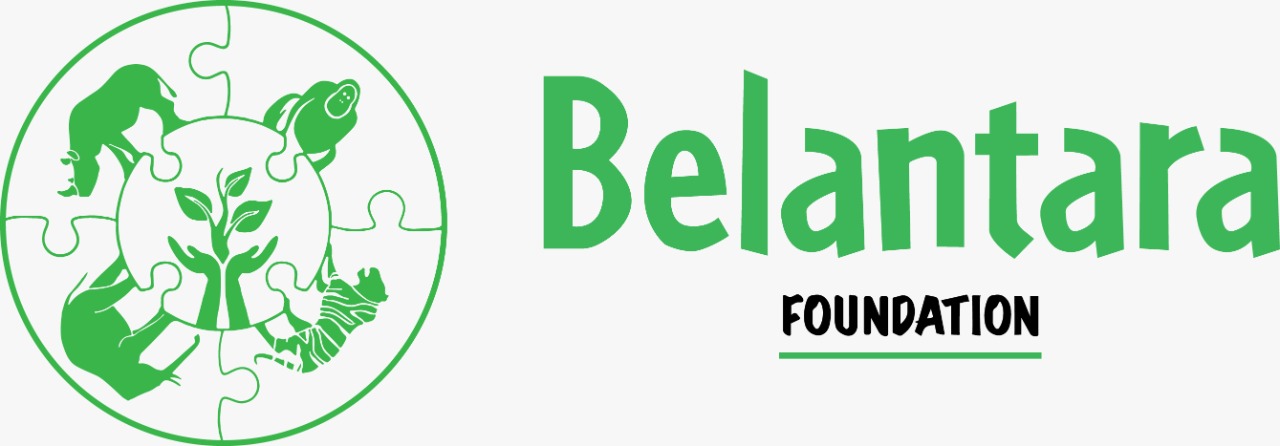Ecological potential of jalawure (Tacca leontopetaloides Kuntz) as an alternative food: relationships between plant height and elevational distribution in coastal Garut, West Java
DOI:
https://doi.org/10.33751/injast.v6i1.27Keywords:
Tacca leontopetaloides, jalawure, elevation, plant height, alternative food, coastal Garut, IndonesiaAbstract
Jalawure (Tacca leontopetaloides Kuntz) is a starch-rich tuberous plant endemic to coastal ecosystems of West Java. This study investigated its growth potential as an alternative food source, analyzing plant height and spatial distribution relative to elevation in Garut Regency’s southern coast. Nine observation plots (10 m × 25 m) were established perpendicular to the shoreline across three districts. For each plot, plant height, elevation, distance to shoreline, soil properties, and plant density were measured. Statistical analysis (Kruskal–Wallis, Duncan test, and linear regression) revealed significant variation in plant height across habitats (p = 0.017), with optimal growth at moderate elevations (15–20 m asl) and semi-shaded plots. Population densities varied from 440 to 1,400 individuals per hectare, indicating substantial carbohydrate reserves. Elevation gradient accounted for ~30% of height variation. These findings highlight jalawure’s potential role in community food resilience and climate adaptation, particularly in drought-prone coastal zones. Promoting jalawure cultivation under agroforestry or coastal restoration frameworks may strengthen local food security.
References
Anderson, J. M., & Ingram, J. S. I. (1993). Tropical soil biology and fertility: A handbook of methods (2nd ed.). CABI. https://doi.org/10.1079/9780851988210.0000
Angles, S., Sundar, A., & Chinnadurai, M. (2011). Impact of climate change on food security in India: A case study of Tamil Nadu. Agricultural Economics Research Review, 24(1), 71–81. https://doi.org/10.22004/ag.econ.118324
Boer, R. (2010). Climate change impact on food security in Indonesia. Journal of the Indonesian Agricultural Sciences, 12(2), 63–76. https://doi.org/10.21082/jp3.v12n2.2010
Draenth, J. (1972). The Taccaceae of the world. Groningen: Rijksherbarium.
Field, A. (2013). Discovering statistics using IBM SPSS statistics (4th ed.). SAGE Publications. https://doi.org/10.4324/9781315749129
Ismail, M. R., Rahman, M. S., & Sofian-Azirun, M. (2019). Climate change effects on agricultural productivity: A review. International Journal of Environmental Science and Technology, 16(2), 1041–1052. https://doi.org/10.1007/s13762-018-1938-6
Jukema, J., & Paisooksantivatana, Y. (1996). Notes on the distribution and uses of Tacca species in Southeast Asia. Economic Botany, 50(4), 480–488. https://doi.org/10.1007/BF02866528
Kent, M. (2012). Vegetation description and data analysis: A practical approach (2nd ed.). Wiley-Blackwell. https://doi.org/10.1002/9781119962397
Li, X., Wang, Y., & Chen, L. (2019). El Niño Southern Oscillation and its impacts on crop yields: A global perspective. Climatic Change, 154(3), 423–435. https://doi.org/10.1007/s10584-019-02449-5
Meena, R. S., & Yadav, G. S. (2010). Botanical description and medicinal importance of Tacca leontopetaloides. Journal of Medicinal Plants Research, 4(21), 2175–2178.
Mueller-Dombois, D., & Ellenberg, H. (1974). Aims and methods of vegetation ecology. Wiley. https://doi.org/10.1002/9781119010685
Nurdin, N. (2011). Agricultural vulnerability to climate change in Indonesia: A review. Indonesian Journal of Agricultural Science, 13(1), 45–52. https://doi.org/10.21082/ijas.v13n1.2011.p45-52
Priatna, D., & Khan, S. M. (2024). The importance of education and role of educational institutions in climate change mitigation and achieving UN SDG 13 “Climate Action”. Indonesian Journal of Applied Environmental Studies, 5(1), 1-5.
Priatna, D., & Monk, K. A. (2023). Climate Change and Its Implications on Wildlife Conservation. Indonesian Journal of Applied Environmental Studies, 4(2), 64-66.
Priatna, D., Monk, K.A., & Khan, S. M. (2025). Empowering the Planet; the 2025 Mother Earth Day Resolution. Indonesian Journal of Applied Environmental Studies, 6(1), 1-6.
Sarvina, D., Supriatna, A., & Hidayat, T. (2020). Effects of ENSO events on rainfall variability and agricultural drought in Indonesia. International Journal of Climatology, 40(6), 3023–3038. https://doi.org/10.1002/joc.6371
Suberjo, H. (2009). Perubahan iklim dan pengaruhnya terhadap produktivitas tanaman pangan. Jurnal Sumberdaya Lahan, 3(2), 89–96.
Utami, H. N., Dewi, I. A., & Nugroho, A. (2011). Dampak perubahan iklim terhadap ketahanan pangan di wilayah pesisir selatan Jawa Barat. Jurnal Agroklimat, 9(1), 45–53.
Wardah, S. (2014). Kajian potensi jalawure (Tacca leontopetaloides) sebagai sumber pangan alternatif di pantai selatan Garut. Prosiding Seminar Nasional Pangan Lokal, 2(1), 55–62.
Wardah, S. (2015). Komposisi pati umbi jalawure sebagai alternatif sumber karbohidrat. Jurnal Teknologi dan Industri Pangan, 26(2), 89–95.
Wardah, S. (2017). Pengembangan tepung jalawure untuk diversifikasi pangan lokal. Jurnal Penelitian Pangan, 35(1), 33–40.
Wardah, S. (2020). Potensi jalawure (Tacca leontopetaloides) sebagai bahan pangan fungsional. Jurnal Sumberdaya Alam dan Lingkungan, 12(3), 145–152.
Zar, J. H. (2010). Biostatistical analysis (5th ed.). Pearson Education.
Downloads
Published
How to Cite
Issue
Section
License
Copyright (c) 2025 Indonesian Journal of Applied Environmental Studies

This work is licensed under a Creative Commons Attribution-NonCommercial-ShareAlike 4.0 International License.


















